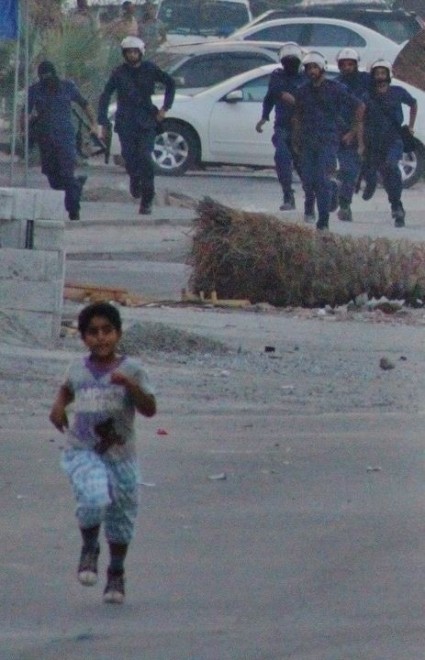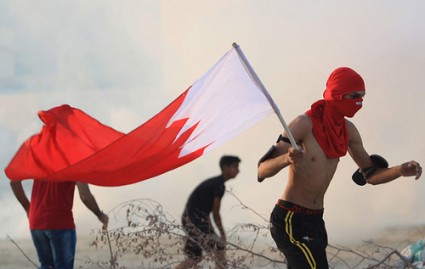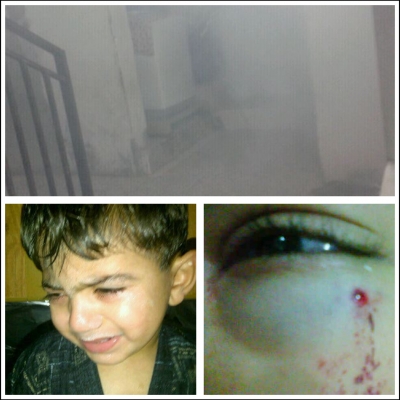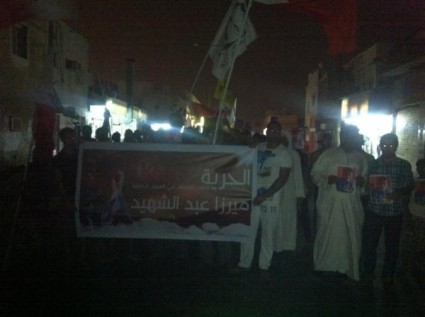UN Human Rights Rapporteurs lose credibility with every rhetorical call for regime action in Bahrain – Substance not empty words
U.N. Rapporteurs Call for Rights Compliance in Bahrain
28 August, 2012 – POMED
Last week, several U.N. human rights rapporteurs called on the Bahraini government to “comply with the rights to peaceful assembly and expression and immediately release those arbitrarily detained for exercising their legitimate freedoms.” Special Rapporteur on human rights defenders Margaret Sekaggya said “The sentencing of Nabeel Rajab represents yet another blatant attempt by the Government of Bahrain to silence those legitimately working to promote basic human rights.” Maina Kiai, the Special Rapporteur on freedom of peaceful assembly and association, contended that “the exercise of the right to freedom of peaceful assembly should not be subject to prior authorization from the authorities.”
Meanwhile, Bahraini human rights activist Maryam al-Khawaja wrote a letter to Egyptian president Mohamed Morsi to protest her recent barring and deportation from Egypt. In the letter, al-Khawaja decried “unlawful and hostile treatment [she] was subjected to at Cairo’s International Airport” after she was prevented from entering the country for “top secret reasons.” She was allegedly threatened with deportation back to Bahrain, where there is a warrant for her arrest. In April, al-Khawaja was also initially denied entry into Egypt, though she was let in after receiving the help of a lawyer and Egyptian activists.
In Bahrain, reports have emerged that the government ordered the transfer of Sunni cleric Adel Hassan al-Hamad from a prominent mosque to a less-prestigious position after al-Hamad described a land donation to the Catholic church as “an attempt to please Western nations.” The cleric warned that “silence in such matters could drag divine consequences” when urging his followers to act on the development. Justin Gengler examines al-Hamad’s actions and demotion in the larger context of the government’s “balancing act” with Bahraini Sunnis, and notes that dozens of Sunni cleric opposed the announcement of the church’s construction.
Finally, Abdulhadi Khalaf contends that Bahrain’s ability to sustain power through massive popular unrest stems from two factors: the United States’ reticence to pledge support to protesters like it did in Egypt and the composition of the Bahraini military which excludes “two-thirds of the indigenous population” from serving, and arrangement that allows “the Bahraini regime to remain confident that its military and security forces will remain loyal.” …source
August 29, 2012 No Comments
Bahrain Secuirty Forces Hunt Children in effort to Terrorise Villages
August 29, 2012 No Comments
Hegemonic Triad: USA-Saud-Israel – invent the ‘Pariah State’, Iran as they plunder MENA with Weapons Greed
Study says U.S. worked out policy goal with Arab allies in the Gulf to build a regional missile defense system to protect cities, oil refineries, pipelines and military bases from possible Iranian military attack.
U.S. tripled weapons sales in 2011 to counter Iran’s threats, study shows
By DPA – 28 August, 2012- Reuters
The United States tripled weapons exports last year, mostly to allies in the Middle East in a major drive to counter Iran’s ambitions in the region, a new study for the U.S. Congress said Monday.
The study by the non-partisan Congressional Research Service, a division of the Library of Congress, said U.S. weapons exports totaled $66.3 billion in 2011, out of a global weapons market of $85.3 billion.
By contrast, Russia’s arms exports stood at a distant second at $4.8 billion in the same year.
The study said the 2011 figures for U.S. arms exports constituted an “extraordinary increase” in just one year over the $21.4 billion in 2010 sales. The U.S. exported weapons worth $31 billion in 2009.
Saudi Arabia, the United Arab Emirates and Oman were major buyers of U.S. weapons at record levels last year, the study said.
In addition, the U.S. had worked out a policy goal with Arab allies in the Gulf to build a regional missile defense system to protect cities, oil refineries, pipelines and military bases from possible Iranian military attack.
In agreements with the U.S. worth 33.4 billion dollars last year, Saudi Arabia agreed to buy 84 advanced F-15 fighters, ammunition, missiles and logistics support and pay for upgrading 70 of the F-15s. The U.S. also sold military equipment that included dozens of Apache and Black Hawk helicopters to the Saudis.
The UAE purchased a Terminal High Altitude Area Defense and an advanced antimissile shield, which includes radars, which were valued at $3.49 billion, as well as 16 Chinook helicopters for $939 million.
Oman bought 18 F-16 fighters for $1.4 billion, the study said. …source
August 29, 2012 No Comments
Expose London’s arms trade on 29th September
Expose London’s arms trade on 29th September
29 August, 2012
2 ½ hours on your bike. 9 arms companies. (Or 1 hour on foot and 3 arms companies!)
The global arms trade is on our doorstep. Conflict, repression and destruction around the world are fuelled by the weapons made in the UK. One year before one of the world’s largest arms fairs is due to take place to London, we want to expose the arms companies and show that wherever they operate there is opposition.
So, in one afternoon we’re going to visit nine of them! Anonymous buildings in Central London will be cordoned off with hazard tape and giant signs erected showing the real business that goes on.
Finmeccanica, just one of the companies we plan to highlight, has sold attack helicopters to Turkey for use against the Kurdistan Workers Party (PKK), military helicopters to Algeria for “battlefield and internal security requirements”, a border control and security system to Libya, drones to Pakistan, armoured vehicles to Oman. Others we will visit have sold weapons which were used to aid repression in Bahrain, and regularly supply one of the most repressive regimes in the world, Saudi Arabia.
Join us as we show that This is NOT OK.
If you’re on foot, meet at:
2pm at MBDA, 11 Strand, WC2N 5RJ (nearest tube: Charing Cross)
then proceed to
2.45pm at BAE Systems, 6 Carlton Gardens, SW1Y 5AD
If you’re on a bike, be at MBDA, 11 Strand, WC2N 5RJ, promptly at 2pm to join the critical mass cycle that will target nine arms company sites in just 2 ½ hours!
August 29, 2012 No Comments
US Arms Sales hit a record $66 billion – Villains Required to Justify Sales
Top gun: Saudi, India deals push US arms sales to record $66 billion
by Uttara Choudhury – 29 August, 2012 – First-Post World
New York: The Congressional Research Service’s annual survey of global arms sales shows the US to be the world’s top arms merchant. The US sold $66.3 billion of weapons overseas in 2011, cornering nearly 78 percent of all global arms sales, which rose to $85.3 billion in 2011.
Predictably, concerns about chest-thumping Iran fueled arms sales to the Middle East especially to pro-US allies like Saudi Arabia and the United Arab Emirates. The Saudis, who have never really got along with Iran and sparred over Islamic leadership in the Persian Gulf, bought 84 advanced F-15 fighters from the US. Territorial disputes between Iran and the United Arab Emirates over three islands in the Gulf have flared recently, with Washington voicing support for the United Arab Emirates’ stance.
But many of the weapons are also being purchased by Asian countries like India and Taiwan which are on a tear to modernize their armies, said the annual report, written for Congress by Richard Grimmett and Paul Kerr. The report noted that India has begun to modernize its old, Soviet-era military equipment and technology and diversify its weapons supply base.
Saudi Arabia was the biggest arms buyer among developing countries, concluding $33.7 billion in weapons deals in 2011, followed by India with purchases of $6.9 billion and the United Arab Emirates with $4.5 billion. Washington also sold around $2 billion worth of antimissile batteries to Taiwan; a deal that stung the Chinese and caused tension during a diplomatic Chinese military visit last July.
“In 2011, the US led in arms transfer agreements worldwide, making agreements valued at $66.3 billion (77.7% of all such agreements), an extraordinary increase from $21.4 billion in 2010. The US worldwide agreements total in 2011 is the largest for a single year in the history of the US arms export program,” noted the report prepared for the US Congress.
While Washington posted “a clear outlier figure” and remained the world’s leading arms supplier, nearly all other major suppliers, except France, saw declines in 2011. Russia, the world’s number two arms dealer got a bloody nose as sales nearly halved to $4.8 billion in 2011. Things were much happier for France which signed arms sales valued at $4.4 billion in 2011, up from $1.8 billion a year earlier. …more
August 29, 2012 No Comments
Israel Analysts vilify Iran in disaster laden US-Saudi Oil and Weapons Greed Conspiracy
Here is an interesting piece from The Israeli Times. While its main purpose is clearly vilification of Iran and fear mongering, it also points to the ‘vulnerability’ of the Saudi Oil Supply and reliance there on. The vulnerability is in the foolish reliance on a single point of failure in the Western oil supply-chain. This model of greed uses the intersection of cheap oil and the cost to secure it. The weapons profiteers enjoy a windfall as the US Weapons Sales hit records in the necessity to protect it. Phlipn.
How Iran could get Carte Blanche in the Middle East — without a nuclear weapon
By Mitch Ginsburg – 28 August, 2012 – The Times of Israel
A cyber attack earlier this month highlighted the vulnerability of the Saudi oil industry, on which so much of the world depends. A recent simulation showed that a full-scale terror attack at Abqaiq, where Saudi Arabia processes six million barrels of oil a day, would hugely bolster Iran and bring economic ruin to parts of the world.
Saudi Aramco, a corporation worth hundreds of billions of dollars and the world’s largest producer of oil, came under cyber attack on August 15. A sophisticated malware weapon destroyed 30,000 of the company’s computers.
In a message on an online bulletin board the attackers called themselves the “Cutting Sword of Justice,” a group unknown to cyber security experts, and said that the attack was retribution for “oppressive measures” taken by Saudi Arabia in the Middle East. The group specifically cited Saudi involvement in Syria and Bahrain — two countries where the Saudi government has reportedly aided Sunni factions in their struggle with the Alawite regime and the Shiite majority, respectively.
Officials at Saudi Aramco said this Sunday that “our core businesses of oil and gas exploration, production and distribution from the wellhead to the distribution network were unaffected and are functioning as reliably as ever,” according to Reuters. It said that the attack had come from “external sources” and that the investigation was ongoing.
This wasn’t the first time that the Saudi oil industry was targeted. Six years ago, Saudi Aramco dealt with a more direct attack. On February 24, 2006, at 3 p.m., a car driven by a suicide bomber exploded at the gate of its Abqaiq oil facility. A second car, loaded with 2,000 pounds of ammonium nitrate as well as unknown quantities of high-grade explosives, crashed through the hole made by the first car and hurtled toward the heart of the oil facility, in the desolate, parched, Shiite-majority Eastern Province of Saudi Arabia.
Abutting one of the world’s largest oil fields with proven reserves of 17 billion barrels, Abqaiq processes two thirds of all Saudi Arabian crude oil. More than six million barrels flow daily through the facility. There the gas components of the oil are stabilized and made safe, stripped of sulfur (made “sweet”), and readied for transportation.
Saudi national guardsmen and a squad from the elite Special Emergency Forces stopped the second car a mile inside the facility, according to the Center for Strategic and International Studies in Washington, DC. Several guards were killed in the initial explosion. The damage to the facility was minor; the Saudi Interior Ministry said the sum total of the damage to the site was “a small fire.” Even so, the price of oil, in a market hypersensitive to risk, rose by two dollars a barrel.
Like this month’s cyber attack, the 2006 terror attack, launched by the subgroup called Al-Qaeda in the Arab Peninsula, was largely unsuccessful and caused no long-term damage. But the two strikes hinted at the vulnerability of the Saudi oil industry, on which so much of the world depends.
Earlier this year, a group of international experts at the Herzliya Conference imagined a very different scenario — a far more drastic one — in which a sophisticated attack on Abqaiq was directed by Iran and carried out from within. In the simulation, a series of explosions, along with a cyber-weapon, crippled the facility.
An illustration of Saudi Arabia’s oil facilities and shipping routes (Photo credit: Courtesy: Institute for Policy and Strategy and the Interdisciplinary Center Herzliya)
An illustration of Saudi Arabia’s oil facilities and shipping routes (Photo credit: Courtesy: Institute for Policy and Strategy and the Interdisciplinary Center Herzliya)
The results of this simulated attack, detailed here in full for the first time, were profoundly disturbing. The price of oil skyrocketed to over $200 per barrel. The House of Saud, and the territorial integrity of the kingdom, were existentially threatened. Saudi Arabia’s neighbors — Jordan, Iraq, the UAE, Bahrain, Qatar, Kuwait and Oman — were destabilized. Developing countries that use oil for electricity were propelled into war, both civil and external.
And Iran, the world’s third-largest producer of oil, authoritatively recognized as the perpetrator of the attack, reaped the rewards, its influence growing throughout the Middle East as the demand for oil outpaced the supply, and the Shiite populations in the Gulf — increasingly unrestful throughout the Arab Spring revolutions — rose up in arms.
“The simulation showed that global over-reliance on Saudi oil and our over-reliance on Saudi stability, would give Iran, in the case of such an attack, carte blanche in the Middle East — and that’s without a nuclear weapon,” said Tommy Steiner, the author of the report and a senior research fellow at the Institute for Policy and Strategy at the Interdisciplinary Center Herzliya. “Even small-scale meddling” — Sinai-style vandalism along the 11,092 miles of pipeline that crisscross the desert kingdom — “would be enough to significantly increase Iran’s standing.” …more
August 29, 2012 No Comments
Respect Sitra or Expect Resistence
August 29, 2012 No Comments
Children abused in indiscriminate attacks by Police in Bahrain Villages
A serious bird-shot eye injury and lethal tear gas fired inside a house by the regime forces
24 August, 2012 – Al Wefaq
August 29, 2012 No Comments
The ceaseless ‘false flag’ campaign against Iran
Police Case for Iranian Bomb Plot Based on Tainted Evidence
by Gareth Porter – 29 August, 2012 – AntiWar.com
In the three-part series “The Delhi Car Bombing: How the Police Built a False Case,” award-winning investigative journalist Gareth Porter dissects the Delhi police accusation against an Indian journalist and four Iranians of involvement in the Feb. 13 bombing of an Israeli embassy car.
The “Special Cell” of the Delhi police has identified an Iranian, Houshang Afghan Irani, as the man it believes carried out the Feb. 13 car bombing at the Israeli embassy in New Delhi that injured the wife of an embassy official. The police believe three other Iranians were also involved in the plot.
But major questions about the integrity of evidence put forward to prove the existence of an Iranian bomb plot cast doubt on that claim, which is the centerpiece of the Israeli accusation that Iran has been waging a campaign of terrorism against Israelis in as many as 20 countries.
Only Indian journalist Syed Mohammed Ahmad Kazmi has been officially charged in the case, and even the treatment of Irani and the other Iranians as suspects depends very heavily on “disclosure statements” supposedly made by Kazmi but denounced by the journalist as police fabrications.
Although the Special Cell (SC) also claims to have forensic evidence of Irani’s link to the bombing, the evidence appears to be tainted by improper police procedures.
A central problem for the SC case is that it has no eyewitness testimony for its contention that Irani planted the bomb on the Israeli embassy car.
A hotel security camera showed that Irani left the hotel the morning of the explosion wearing a black jacket. Irani had also rented a black Honda Karizma. But eyewitness Gopal Krishanan, who was driving the car that was directly behind the embassy car and thus had a clear view of the motorcycle rider when he attached the bomb to the rear of the car, said he was certain the rider had a red motorcycle and was wearing a red helmet and red jacket.
The police were convinced by his testimony. Tal Yehoshua-Koren, who was injured in the attack but was able to get to the Israeli embassy without assistance, later told investigators she thought the attacker had been riding a black motorcycle and wearing a black jacket and helmet. A senior police officer involved in the case told the Indian Express, however, that Yehoshua-Koren could not be certain of the color of the motorcycle.
The police continued to search for a red motorcycle after obtaining her statement, as was widely reported in the Indian press. Only after the SC decided that Irani was the bomber did the police switch to the position that the bomber had been riding a black motorcycle and wearing a black helmet and jacket.
Irani became a target of the investigation after the SC learned that a phone number associated with Masoud Sedaghat Zadeh, one of the three Iranians staying in a Bangkok house where an explosion occurred Feb. 14, had allegedly contacted the Indian mobile phone number being used by Irani.
The charge sheet does not include documentation for the claim that Irani’s phone had been called by that of the accused in the Bangkok explosion. And Irani’s receipts shown in the charge sheet for the moped purchased in April 2011 and for the motorcycle rented in early 2012 list Indian mobile phone numbers different from the one cited as having been contacted by Zadeh.
Irani made no effort to hide his identity in either of those transactions, so there would be no reason for him to write a false number on the receipt.
The police claim to have recovered from Irani’s hotel room seven items on which the government’s Central Forensic Science Laboratory found traces of TNT — the same explosive that the bomb affixed to the embassy car contained.
But the SC violated several police procedures in regard to that evidence, suggesting that it may have been planted by the Special Cell. …more
August 29, 2012 No Comments
Regime enages in Systematic Terror using Child Abuse
“Mirza Abdul-Shaheed Mirza” of Bahrain, Youngest Political Prison Ever
Local Editor – Al-Manar News
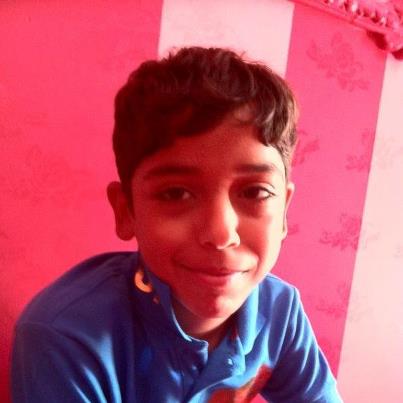
Mohsen Mohammad Sadiq Al-Arab (left) and Mirza Abdul-Shaheed Mirza (right) inside the Bahraini courtBahraini authorities extended the arrest period of the two kids “Mirza Abdul-Shaheed Mirza, 12 years, and Mohsen Mohammad Sadiq Al-Arab, who hasn’t completed his 13 years yet, after being accused of political charges.
With the detention renewal, Mirza becomes the youngest political prisoner in Bahrain and the world, sitting in the authorities prisons in the capital Manama with the child Mohammad Mohsen Sadiq Al-Arab since the twenty-one days.
Both kids were accused of political charges for participating in the demonstrations demanding reforms in the Gulf island.
The Bahraini political prisoner Mirza Abdul-Shaheed Mirza, 12 years.In addition to Mirza and Al-Arab, the Peninsula Shield-backed Bahraini security forces arrested the child Mohammad Abbas Al-Molani, 16 years, for his participation in the protests demanding freedom in Bahrain.
The Bahraini Al-Wefaq opposition group said that “this case presented a flagrant model of the escalating violence committed by the Bahraini authorities against human and child rights.”
Al-Wefaq stressed that Bahraini regime violates child rights on a daily basis through the continuous suppression against the peaceful protests in cities and villages, along with “arbitrary” arrests and issuing the verdicts which represent a model of “political persecution” and a false image of justice.
According to Al-Wefaq, “the arrest renewal against the children in Bahrain is a model of injustice provisions issued by the international community and the United Nations.”
August 29, 2012 No Comments
In Bahrain, Mercenary Military-Police Force, US-Saudi Support keep regime in power
Bahrain’s Military Is Closely Tied to the Monarch
Abdulhadi Khalaf – 28 August, 2012 – NYT Opinion
That Bahrain has been able to weather the turmoil that has brought down other authoritarian rulers in the Arab region may be explained by two characteristics in the Bahraini situation.
The first is the different position taken by the U.S. administration toward popular protests against authoritarian regimes in the Arab region. The U.S. role has been crucial in shaping the outcomes of the popular protest in Tunisia, Egypt and Yemen. Its active role in the militarization of the popular protests in Libya facilitated the fall of the Libyan dictator. The U.S. political and logistical support remains crucial to sustaining the Syrian opposition groups.
It is a different story in Bahrain, which also happens to be the headquarters of the U.S. Navy’s Fifth Fleet. The Obama administration, fearful of alienating Saudi Arabia, has not offered protesters in Bahrain the level of support it has given to Arab protesters elsewhere. The resumption last May of American military supplies to the Bahraini government has hardened the regime’s intransigence.
The second feature relates to the role military and security forces have played once the protest started. In Tunisia and Egypt, the military and security forces rapidly distanced themselves from the regime, thus facilitating their rapid fall.
Unlike the rest of the Arab region, the rank and file in the Bahraini military, police and security forces consist almost entirely of foreign recruits. Most of its officers and noncommissioned officers are members of the ruling family and its allied tribes. Bahraini Shias, two-thirds of the indigenous population, are generally excluded from serving in these forces. These arrangements allow the Bahraini regime to remain confident that its military and security forces will remain loyal no matter how high the civilian casualties are. Unlike Libya and Syria, sectarian and tribal identities will not tempt soldiers in Bahrain to defect. …source
August 29, 2012 No Comments
In Bahrain, Mercenary Military-Police Force, US-Saudi Support keep regime in power
Bahrain’s Military Is Closely Tied to the Monarch
Abdulhadi Khalaf – 28 August, 2012 – NYT Opinion
That Bahrain has been able to weather the turmoil that has brought down other authoritarian rulers in the Arab region may be explained by two characteristics in the Bahraini situation.
The first is the different position taken by the U.S. administration toward popular protests against authoritarian regimes in the Arab region. The U.S. role has been crucial in shaping the outcomes of the popular protest in Tunisia, Egypt and Yemen. Its active role in the militarization of the popular protests in Libya facilitated the fall of the Libyan dictator. The U.S. political and logistical support remains crucial to sustaining the Syrian opposition groups.
It is a different story in Bahrain, which also happens to be the headquarters of the U.S. Navy’s Fifth Fleet. The Obama administration, fearful of alienating Saudi Arabia, has not offered protesters in Bahrain the level of support it has given to Arab protesters elsewhere. The resumption last May of American military supplies to the Bahraini government has hardened the regime’s intransigence.
The second feature relates to the role military and security forces have played once the protest started. In Tunisia and Egypt, the military and security forces rapidly distanced themselves from the regime, thus facilitating their rapid fall.
Unlike the rest of the Arab region, the rank and file in the Bahraini military, police and security forces consist almost entirely of foreign recruits. Most of its officers and noncommissioned officers are members of the ruling family and its allied tribes. Bahraini Shias, two-thirds of the indigenous population, are generally excluded from serving in these forces. These arrangements allow the Bahraini regime to remain confident that its military and security forces will remain loyal no matter how high the civilian casualties are. Unlike Libya and Syria, sectarian and tribal identities will not tempt soldiers in Bahrain to defect. …source
August 29, 2012 No Comments
The Life and Death of Hussam AlHaddad
Bahrain Interview: The Life and Death of 16-Year-Old Hussam AlHaddad
29 August, 2012 – EA World View – Josh Shahryar
That future is now gone. Instead Hussam AlHaddad is in a graveyard in Muharraq, leaving everyone to wonder how a life so precious could be lost.
Shock is perhaps the first word that one hears when speaking to Hussam’s family about his death. What’s gripped them is a profound sense of helplessness at how quickly fate turned on him — on Friday, 17 August, his body was carried onto an ambulance in Muharraq, after he was hit by shotgun pellets and then allegedly kicked and beaten up on the street by more than half a dozen men.
According to authorities, Hussam was a masked “rioter”, involved in a “terror act” who put the lives and safety of Bahraini security forces at risk by throwing Molotov bombs at them. His cousin, Hussein AlHaddad, differs:
“He is the good son, you know.”
Hussam was also a hard-working student, with an average grade this year of 92%. Hussain, who is 32, painfully recounts the last conversation with his cousin about the future. “I want to do electronics or airplane engineering,” Hussam had said. It was an easy decision — several members of his extended family were engineers, and his father worked with Gulf Air.
But the violence and oppression in Bahrain had already affected him. Two years ago during Ramadan, Hussam was arrested because of a small fire in a trash can near his house. After spending a month in juvenile detention, he was freed without charge, but he knew the risk to his future if he again crossed the path of the police.
And so the story of how Hussam died, according to his family, is in stark contrast to official government accounts.
As is customary during Ramadan, the Al Haddads had gathered at a Maatam in front of his grandfather’s house on that Friday in Muharraq to pray and mourn. At about 9:30 p.m., a hungry Hussam decided to go to a cafeteria a kilometre or two away.
A few minutes before ten, Hussain’s older brother Jassim called, but he was not able to convey the message in his state of shock. He phoned again minutes later and told Hussain that riot police had attacked Hussam. Hussain drove with Hussam’s father to the area to find commotion, riot police, and an ambulance. They were told that Hussam had been shot, but he was in stable condition and had been taken to the Ministry of Interior’s hospital.
The two men drove there, but they were told that Hussam was at the military hospital. When they arrived at that facility, they were held outside the gate for an hour and fifteen minutes. In their distress, Hussain tried several times to enter, but was rebuffed each time. Finally, they were told that Hussam would be sent in 90 minutes to Salmaniya Hospital, the country’s main medical facility, where he could be seen.
The father and cousin drove back to Muharraq to wait. It was there that they saw news reports on Twitter from the Ministry of Interior of the shooting death of a teenager. Another cousin went to Salmaniya to receive the body, but was told to come in the morning. He was also informed that he would not receive a death certificate and that the body must be buried discreetly and without any mourning ceremony. …source
August 29, 2012 No Comments

